Mistakes to Avoid When Buying Olive Oil
An article in THE OLD FARMER’S ALMANAC’s online newsletter caught my eye. The author and award-winning chef, T.J. Robinson (aka the “Olive Oil Hunter”) talked about the three biggest mistakes almost everyone makes when buying olive oil, no matter where they shop. I read every word.
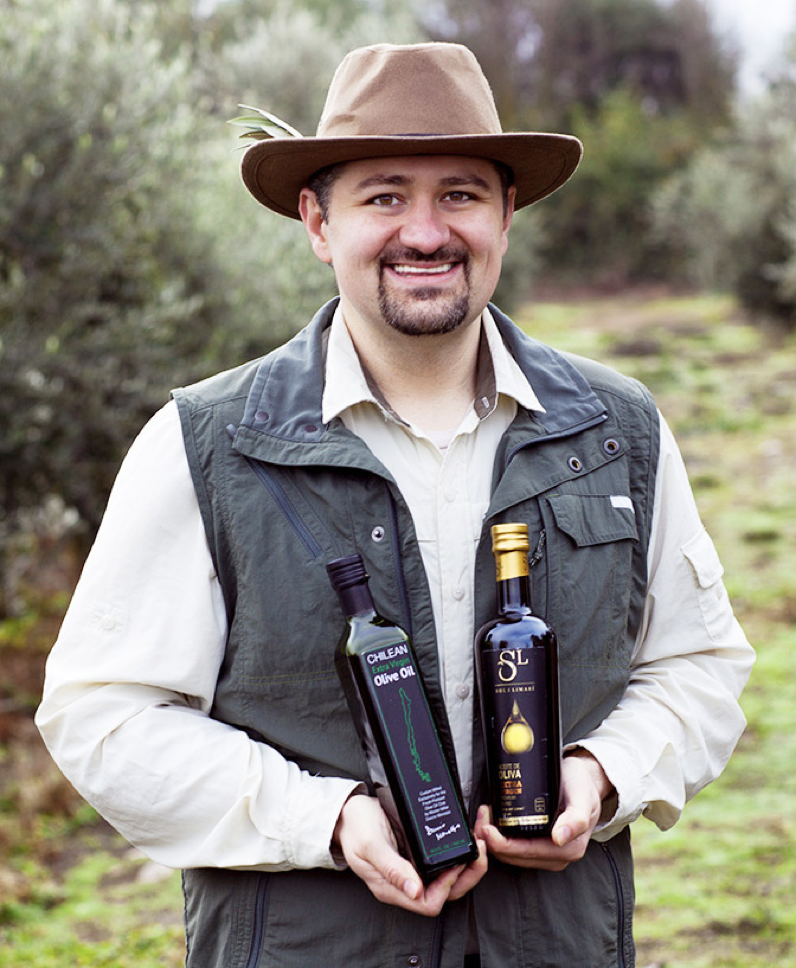
Mistake #1: Buying Any Grade Other Than Extra Virgin. Always stick with extra virgin olive oil (aka EVOO). It’s the most flavorful, nutritious, and most natural form of olive oil. And according to Robinson, it’s also the only grade that retains its natural phenols (antioxidants) and other health-promoting compounds.
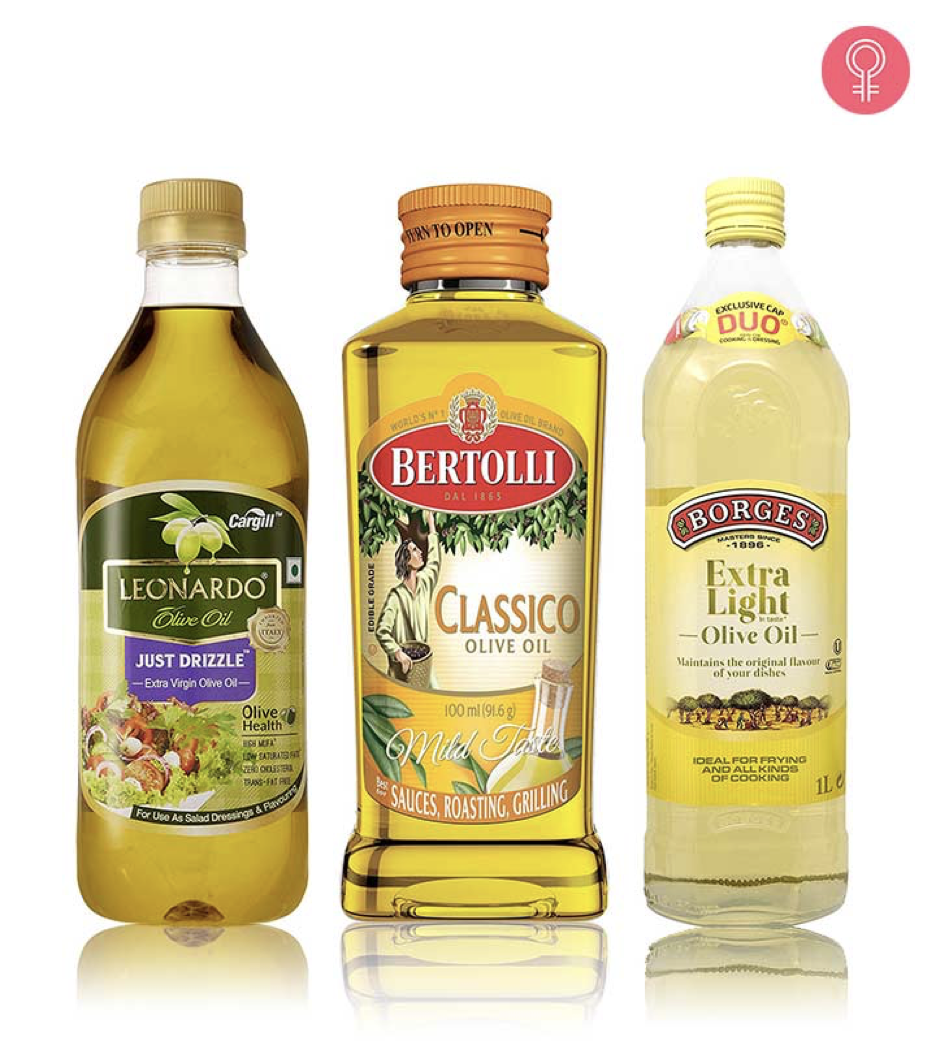
Extra virgin olive oil is cold-pressed, meaning it’s not extracted using high heat or harsh chemicals. It’s minimally processed, so it retains its wholesome nutrients. All other olive oil grades, such as “virgin,” “pure,” or “light,” have been chemically refined to mask defects, which typically destroys the healthful phenols.
Mistake #2: Buying Stale Supermarket Olive Oil. However, it all depends on where you get your olive oil. Even if the label says “extra virgin,” if you got it at the supermarket, you’re likely to have purchased an oil that’s old, stale, rancid, adulterated, or even counterfeit.
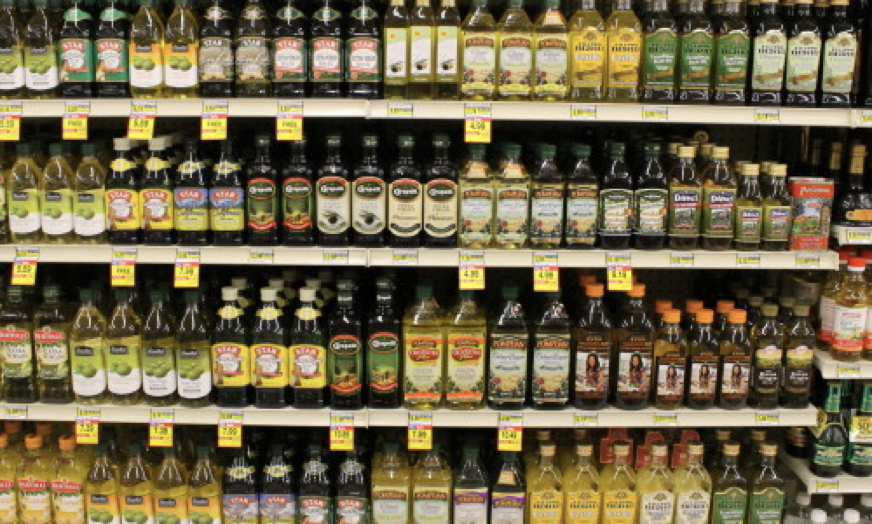
Robinson says “Olive oil, unlike wine, does not get better with age. Olives, after all, are a fruit. And olive oil is actually a fruit juice. Just like orange juice, olive oil tastes so much better fresh-squeezed. Olive oil remains at its zenith of glorious flavor and nutritional content for about six months after the harvest. The problem is, harvest-fresh olive oil is almost impossible to find in supermarkets.”
Most olive oil is shipped to the US on slow-moving cargo ships. Then it languishes in warehouses and on store shelves for months. As a result, store olive oils are technically within their “best if used by” date, but months beyond their window of peak freshness, flavor and nutritional potency.
Because of these and other factors that cause staleness and rancidity, the Olive Center at the University of California, Davis, found that many imported olive oils labeled “extra virgin” sold in stores couldn’t qualify to be classified as “extra virgin olive oil,” the highest grade, because they were so substandard.
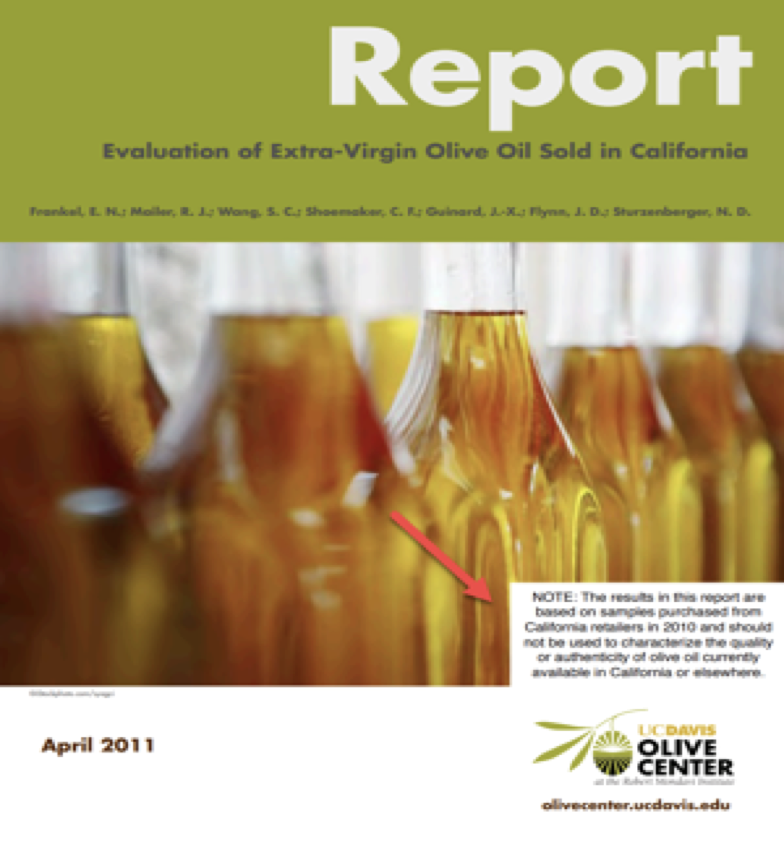
The bottom line? Forget the “best used by” date on the label. It tells you nothing about how recently the olive oil was pressed. You need to find EVOO with a pressing date (also known as the “harvest date”) on the label, preferably a date no more than six months before your date of purchase.
Producers of mediocre, mass-market store-sold olive oils don’t include pressing dates on the label; they don’t want you to know how old, stale, or rancid their oils may be. If fact, you can verify this by checking the bottle in your own pantry right now. If you bought it in a store, the odds are overwhelming that the harvest date was intentionally omitted from the label. This is no coincidence, and it’s no way to buy your EVOO, not when freshness is the most critical factor in olive oil flavor and nutritional goodness.
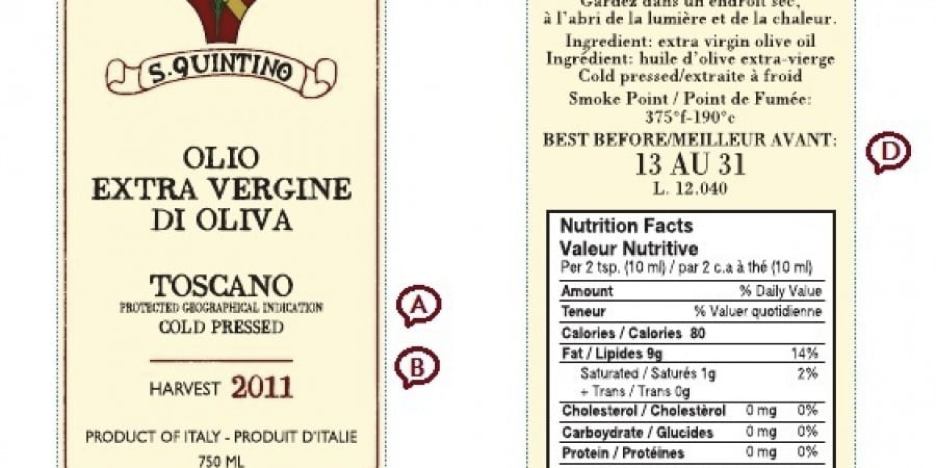
Robinson recommends you remember four crucial words whenever you shop for olive oil: the fresher, the better. He says it’s best to buy online, directly from award-winning farms, from the latest harvests around the world. That’s when olive oil is bursting with just-plucked-from-the-tree flavor and goodness. Try just one bottle of fresh-pressed olive oil from a good online company, and you’ll likely never go back to store-bought oils.
Finally, Mistake #3: Unwittingly Buying Fake Olive Oil. They’re flooding U.S. supermarkets. NBC News has reported that “fake olive oil is rampant.” The Wall Street Journal adds, “American grocery stores are awash in cheap, fake ‘extra virgins.’” In an explosive exposé, 60 Minutes has cautioned that you face a “sea of fakes” when you shop for olive oil in stores.
Just as counterfeiters pocket fortunes by creating cheap knockoffs of designer clothing and handbags, they palm off fake olive oil (cutting it with rapeseed oil) as extra virgin, the highest grade. The New Yorker magazine has reported that the profits in counterfeiting olive oil are “comparable to cocaine trafficking, with none of the risks.”
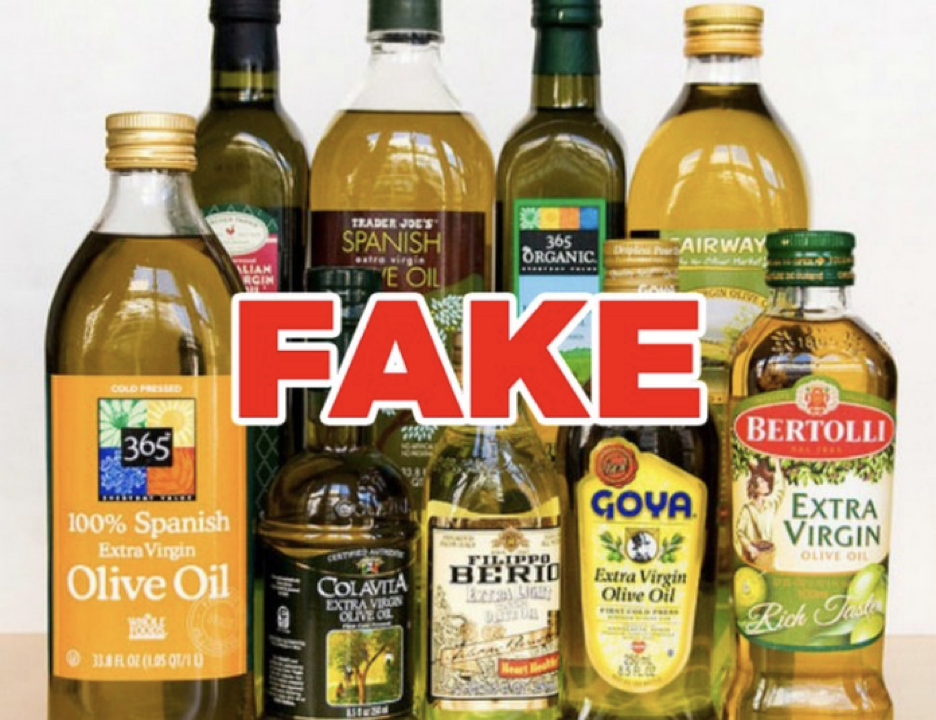
To add insult to injury, research shows these fake oils are also cancer-causing. Not only do they taste terrible, they come with hydrocarbon residues, pesticides, and other contaminants. This is why it’s so important to know for certain that your olive oil is not counterfeit. But how do you do that? Robinson advises buying from a supplier whose oils are independently lab certified to be 100% pure extra virgin. This gives you protection against all the fakes.
My suggestion is to keep it simple. Robinson has his own sight, www.freshpressedoliveoil.com, where you can join his olive oil club and order from him. He’s toured the world hunting for the freshest, purest oils. Every shipment of fresh-pressed olive oil is accompanied by his “Pressing Report,” describing the producer, olive varieties, regions, and harvest, as well as tasting notes for each oil, and suggestions for ways to enjoy each of the oils.

Or consider going to www. https://olivecenter.ucdavis.edu/ and order from the Olive Center at U.C. Davis. They grow their own olives and their pure extra virgin olive oil is harvested with volunteers. Plus, sales fund olive research and education. You KNOW you’re getting the real deal…it’s a win-win all the way around!
blog comments powered by Disqus

Mistake #1: Buying Any Grade Other Than Extra Virgin. Always stick with extra virgin olive oil (aka EVOO). It’s the most flavorful, nutritious, and most natural form of olive oil. And according to Robinson, it’s also the only grade that retains its natural phenols (antioxidants) and other health-promoting compounds.

Extra virgin olive oil is cold-pressed, meaning it’s not extracted using high heat or harsh chemicals. It’s minimally processed, so it retains its wholesome nutrients. All other olive oil grades, such as “virgin,” “pure,” or “light,” have been chemically refined to mask defects, which typically destroys the healthful phenols.
Mistake #2: Buying Stale Supermarket Olive Oil. However, it all depends on where you get your olive oil. Even if the label says “extra virgin,” if you got it at the supermarket, you’re likely to have purchased an oil that’s old, stale, rancid, adulterated, or even counterfeit.

Robinson says “Olive oil, unlike wine, does not get better with age. Olives, after all, are a fruit. And olive oil is actually a fruit juice. Just like orange juice, olive oil tastes so much better fresh-squeezed. Olive oil remains at its zenith of glorious flavor and nutritional content for about six months after the harvest. The problem is, harvest-fresh olive oil is almost impossible to find in supermarkets.”
Most olive oil is shipped to the US on slow-moving cargo ships. Then it languishes in warehouses and on store shelves for months. As a result, store olive oils are technically within their “best if used by” date, but months beyond their window of peak freshness, flavor and nutritional potency.
Because of these and other factors that cause staleness and rancidity, the Olive Center at the University of California, Davis, found that many imported olive oils labeled “extra virgin” sold in stores couldn’t qualify to be classified as “extra virgin olive oil,” the highest grade, because they were so substandard.

The bottom line? Forget the “best used by” date on the label. It tells you nothing about how recently the olive oil was pressed. You need to find EVOO with a pressing date (also known as the “harvest date”) on the label, preferably a date no more than six months before your date of purchase.
Producers of mediocre, mass-market store-sold olive oils don’t include pressing dates on the label; they don’t want you to know how old, stale, or rancid their oils may be. If fact, you can verify this by checking the bottle in your own pantry right now. If you bought it in a store, the odds are overwhelming that the harvest date was intentionally omitted from the label. This is no coincidence, and it’s no way to buy your EVOO, not when freshness is the most critical factor in olive oil flavor and nutritional goodness.

Robinson recommends you remember four crucial words whenever you shop for olive oil: the fresher, the better. He says it’s best to buy online, directly from award-winning farms, from the latest harvests around the world. That’s when olive oil is bursting with just-plucked-from-the-tree flavor and goodness. Try just one bottle of fresh-pressed olive oil from a good online company, and you’ll likely never go back to store-bought oils.
Finally, Mistake #3: Unwittingly Buying Fake Olive Oil. They’re flooding U.S. supermarkets. NBC News has reported that “fake olive oil is rampant.” The Wall Street Journal adds, “American grocery stores are awash in cheap, fake ‘extra virgins.’” In an explosive exposé, 60 Minutes has cautioned that you face a “sea of fakes” when you shop for olive oil in stores.
Just as counterfeiters pocket fortunes by creating cheap knockoffs of designer clothing and handbags, they palm off fake olive oil (cutting it with rapeseed oil) as extra virgin, the highest grade. The New Yorker magazine has reported that the profits in counterfeiting olive oil are “comparable to cocaine trafficking, with none of the risks.”

To add insult to injury, research shows these fake oils are also cancer-causing. Not only do they taste terrible, they come with hydrocarbon residues, pesticides, and other contaminants. This is why it’s so important to know for certain that your olive oil is not counterfeit. But how do you do that? Robinson advises buying from a supplier whose oils are independently lab certified to be 100% pure extra virgin. This gives you protection against all the fakes.
My suggestion is to keep it simple. Robinson has his own sight, www.freshpressedoliveoil.com, where you can join his olive oil club and order from him. He’s toured the world hunting for the freshest, purest oils. Every shipment of fresh-pressed olive oil is accompanied by his “Pressing Report,” describing the producer, olive varieties, regions, and harvest, as well as tasting notes for each oil, and suggestions for ways to enjoy each of the oils.

Or consider going to www. https://olivecenter.ucdavis.edu/ and order from the Olive Center at U.C. Davis. They grow their own olives and their pure extra virgin olive oil is harvested with volunteers. Plus, sales fund olive research and education. You KNOW you’re getting the real deal…it’s a win-win all the way around!
Sources:
- www.insight-egypt.com
- www.freshpressedoliveoil.com
- www.therealitalianfood.com
- www.aboutoliveoil.org
- www.gaiasplate.com
- www.this-is-italy.com
- www.caes.ucdavis.edu
 Alice Osborne
Alice Osborne
Weekly Newsletter Contributor since 2006
Email the author! alice@dvo.com
